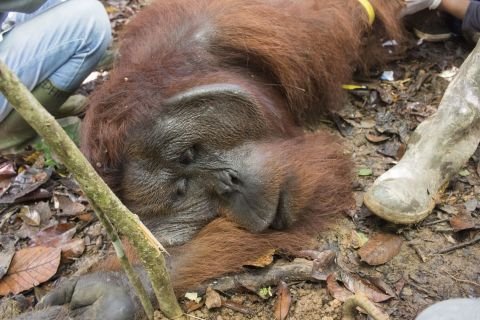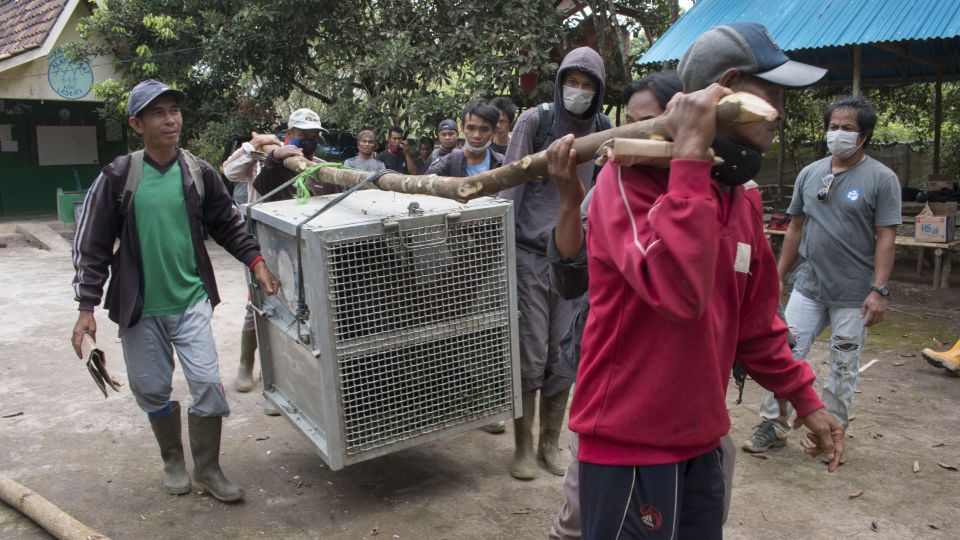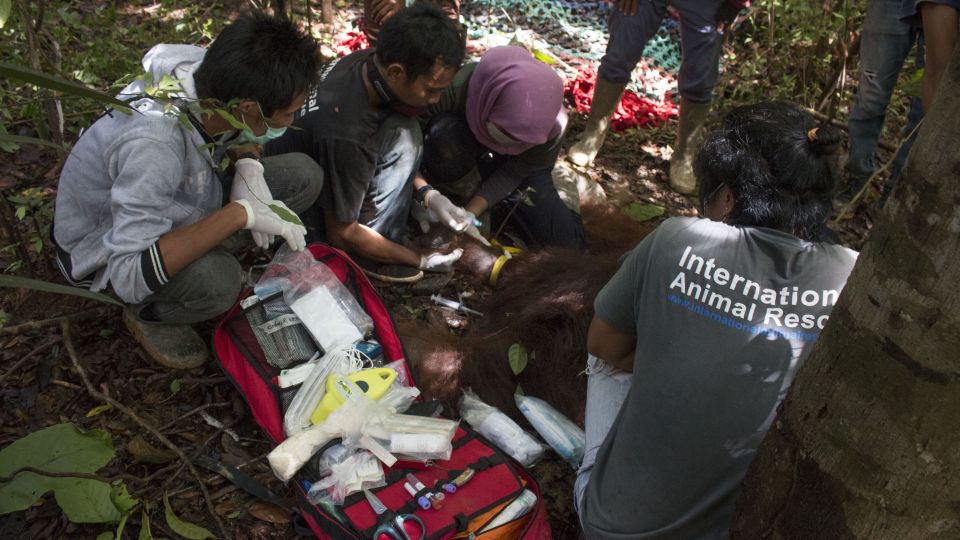
Our team in Indonesia worked with the Natural Resources Conservation Centre (BKSDA) of West Kalimantan, Gunung Palung National Park (TNGP) and a Conservation Task Force from palm oil company PT Kayung Agro Lestari to rescue the orangutan from a community garden around Jalan Siduk-Ketapang km. 9 in Desa Riam Berasap, Kecamatan Sukadana, Kayong Utara District, West Kalimantan. The rescue took place on Friday 14 July. The rescue team named the orangutan Kukar. He was estimated to be around 17 years of age and thought to have come from the Gunung Palung National Park area.
It was necessary to evacuate the orangutan because he had been damaging the coconut trees and other plants in the local residents’ community gardens. Based on monitoring by our Human-Orangutan Conflict (HOC) patrol team, the orangutan had destroyed 20 coconut trees.
“Residents first reported the orangutan to us in June, followed by another report in July,” explained Reli, a member of our HOC Patrol team. “We have been monitoring this orangutan for a week now because of the increasing disruption he has been causing.”

Following up on reports and information from the HOC team, we sent a rescue team to evacuate the orangutan. In addition to preventing him from destroying any more trees, there was a risk that the residents, who were angry because the garden was being damaged, would attack and hurt the orangutan.
The rescue team arrived on site at 8am, along with the BKSDA and the conservation taskforce team from PT KAL. The team had to wait because the orangutan had disappeared the night before. However luckily Kukar reappeared an hour later – probably in order to feast once more on the residents’ coconut trees.
The rescue team immediately prepared to shoot the orangutan with a dart gun and catch him in a net. He was successfully hit with the first shot of the gun and soon down on the ground once the sedative took effect. The medical team immediately examined the orangutan and inserted a microchip under his skin for future identification.

After examining Kukar, the medical team agreed that he could be taken straight to a release site in Gunung Palung National Park.
“His condition is very healthy, he is a good weight and not suffering from dehydration or any other disorders. In addition, our monitoring team has also confirmed that he is very active and agile when he moves through the trees, “said Dr Suhli Aufa, coordinator of the medical team.
Shortly after noon, the translocation team took the orangutan in the transport cage to the release site at Riam Berasap Resort, more than 5 kilometres inside Gunung Palung National Park. This area was chosen because the condition of the forest there is still good, with a plentiful supply of food to support wild orangutans like Kukar. In addition, it is believed that Kukar came from the area of the National Park and so should be returned to a familiar environment. The translocation team arrived at the release site at about 5pm. When the cage was opened, Kukar demonstrated his agility by immediately climbing swiftly up the nearest tree.
Programme Director Karmele L. Sanchez said: “Pressure from the unsustainable plantation industry is putting increasing pressure on orangutan habitats. The wild orangutan population, particularly in Ketapang Regency, is declining because the forest is disappearing so rapidly. Forest fires in 2015 caused additional forest loss in the TNGP area. This leads to many conflicts between orangutans and humans, as is the case with Kukar. IAR operates a landscape-based conservation programme involving companies, governments and other stakeholders and local communities to seek a more balanced approach for people and the natural environment.”

